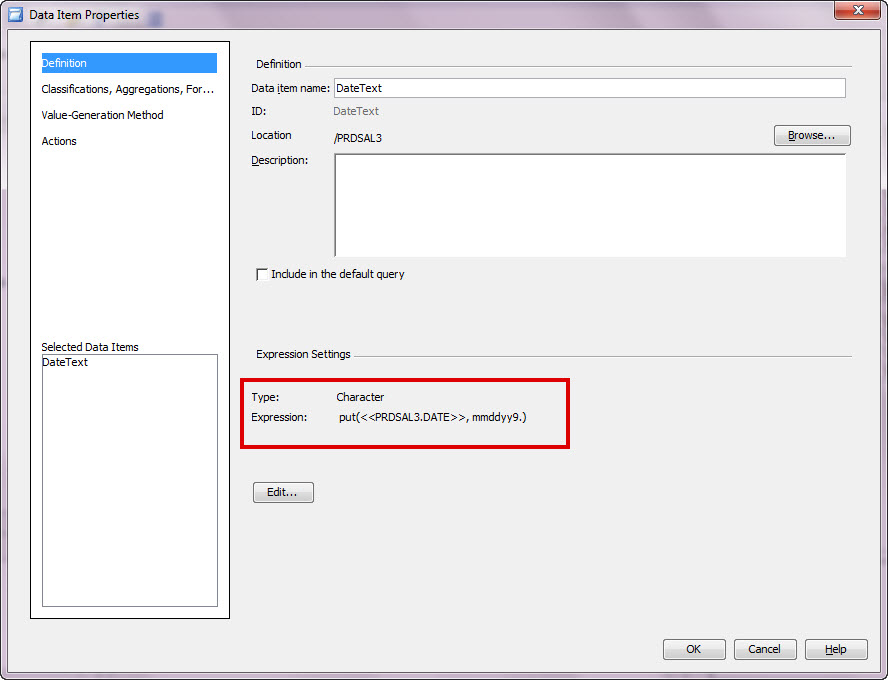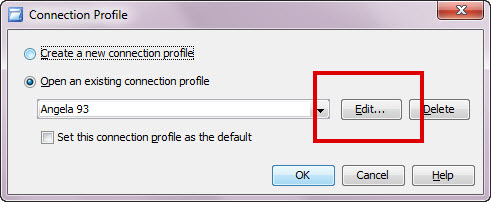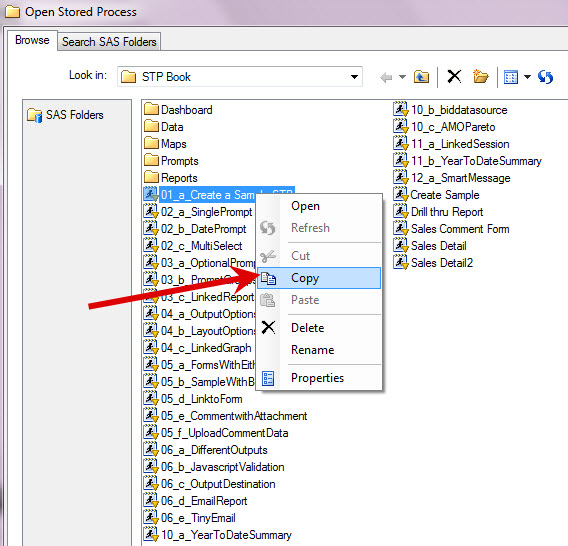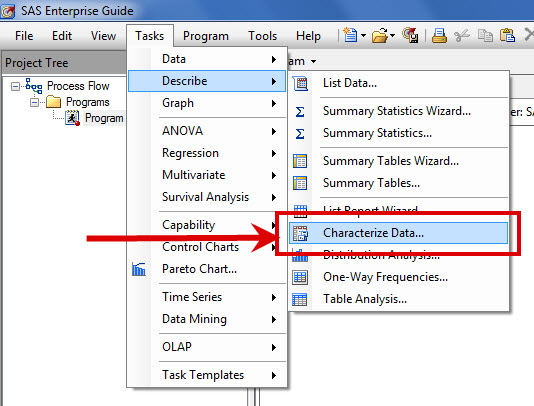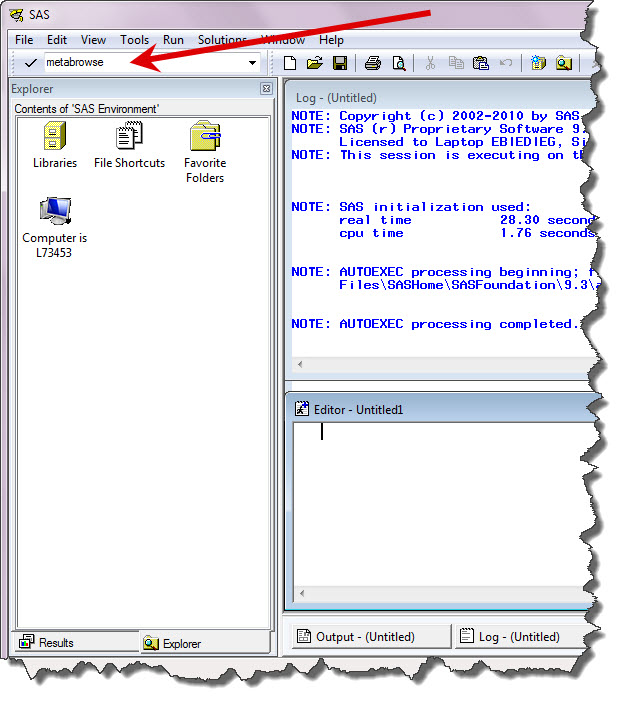
A common question really and one that I get after posting code like yesterday's All SAS Stored Process Locations Report. The neat trick is just to type METABROWSE in a BASE SAS command window. (There are two other commands: METACON and METAFIND. Has anyone got any tips on when those


